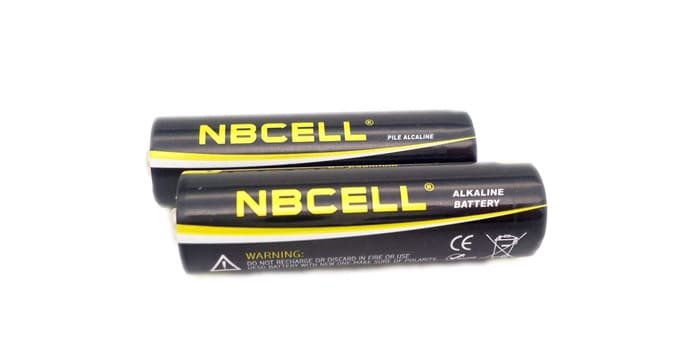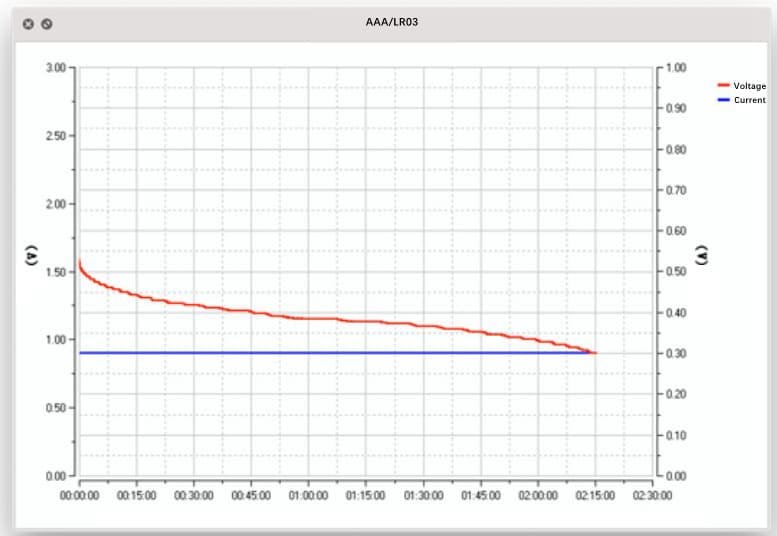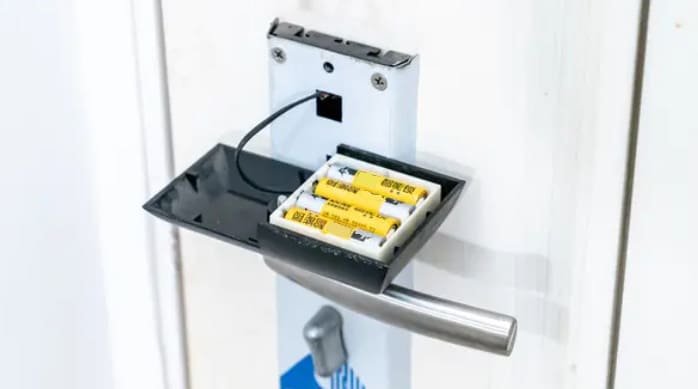Why are alkaline batteries not labelled with capacity?
Have you ever stood in front of the battery aisle and been puzzled by the information labelled on the batteries? They are all small cylindrical batteries, but why do some, such as NiMH and Li-ion batteries, have a capacity of “mAh” marked on them, while others, such as alkaline batteries, have no capacity marked on them? You might think it was “forgotten at the factory”, but it’s more like “intentionally left off”. So why are there no capacity labels on alkaline batteries?
The answer is that the amount of discharge current has a greater effect on alkaline batteries, and the capacity measured at different currents varies greatly. This leads to a big difference in the capacity of alkaline batteries under different devices. Moreover, alkaline batteries are designed for single use, and users do not care about their capacity as much as they do about rechargeable batteries, but focus more on the usage time within a single life cycle. Therefore, alkaline batteries are not labelled with capacity.

Let’s learn more about this issue from several aspects.
1.Batteries can be classified as rechargeable or non-rechargeable. Alkaline batteries are generally non-rechargeable batteries that provide a stable output over their lifetime, but will react differently under different loading conditions. For example, if the same alkaline battery is discharged at 1A, the approximate capacity is around 800mAh, and if it is discharged at 100mAh, the approximate capacity is around 4000mAh. On the other hand, nickel-metal hydride(NiMH) and lithium-ion batteries are rechargeable batteries that have a specific capacity number, which indicates how efficiently they can be powered over multiple charging cycles. The capacity of rechargeable batteries is relatively stable regardless of the device they are powering, which is why they are clearly labelled. In contrast, the effective capacity of alkaline batteries varies dramatically depending on the power needs of the device, so a single standardised capacity label is not only impractical, but also potentially misleading.
2.When dealing with end-consumers, battery manufacturers usually focus on the performance of their batteries in certain popular devices (e.g., “long-lasting batteries in digital cameras”), which is more relatable to the average consumer as opposed to the concept of “mAh”. Coupled with the fact that alkaline batteries are usually produced in standard sizes, end consumers are used to making choices based on size and brand preference. That’s why capacity is usually not labelled on alkaline batteries.

So what exactly is the capacity of alkaline batteries?
Below are some common alkaline battery sizes and their typical capacities:
AA/LR6 Alkaline Batteries: Standard AA alkaline batteries typically have a capacity between 1700 and 3000 mAh. This is the most common battery capacity for many household and consumer devices.
AAA/LR03 Alkaline Batteries: AAA alkaline batteries typically have a capacity of 1,000 to 1,200 mAh. They are smaller than AA batteries and are commonly used in devices such as TV remotes and small toys.
C/LR14 Alkaline Batteries: C alkaline batteries typically have a capacity of 6000 to 8000 mAh. They are larger and are used in devices that draw more power.
D/LR20 Alkaline Batteries: D alkaline batteries have a capacity of 8000 to 12000 mAh. These batteries are used in high-drain devices such as torches and portable stereos.
9V Alkaline Batteries: Standard 9V alkaline batteries typically have a capacity of 400 to 600 mAh. They are commonly used in smoke detectors and other small electronic devices.
It is important to note that actual capacity varies depending on the brand, quality and use of the battery. Environmental factors such as temperature can also affect battery performance and capacity.

What are the considerations for purchasing alkaline batteries?
As a professional buyer, what should we pay attention to when purchasing alkaline batteries?
Firstly, according to the application scenario of the battery, whether it is for general household or industrial use, and whether it has any special requirements.
Secondly, you can measure the discharge time of alkaline batteries by constant resistance discharge. This can be used as one of the reference indexes for the quality of alkaline batteries.
Finally, the price is of course one of the key points. In the economic downturn, when all other conditions can be met, cost-effective alkaline batteries will of course become the first choice.
